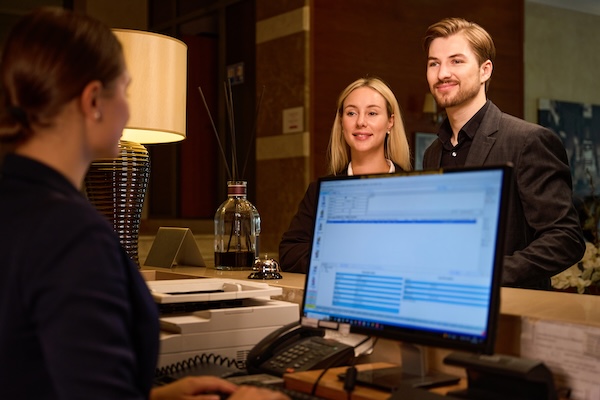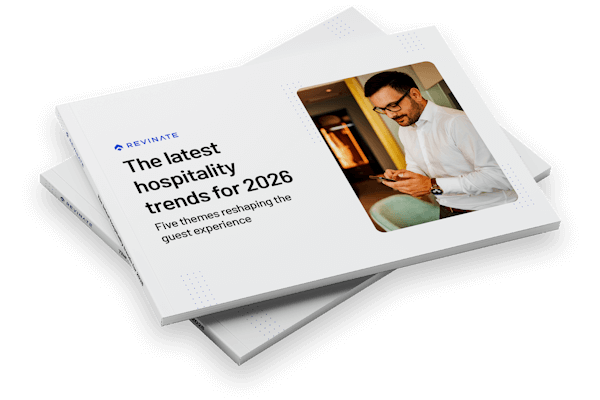Email timing that converts: Win guests on Travel Tuesday
Email timing that converts: Win guests on Travel Tuesday
While Black Friday and Cyber Monday may grab the headlines, Travel Tuesday is where hoteliers really need to focus on making their move.
Falling right after the shopping frenzy, Travel Tuesday is when travelers are still browsing, comparing, and ready to book their next getaway — and when a perfectly timed email can make all the difference and increase your direct bookings.
While most brands go quiet after Cyber Monday, hotels that send well-timed, segmented campaigns on Travel Tuesday stand out. So, here’s how to use timing to your advantage and make it one of your highest-performing days of the year.
Why timing matters for your direct bookings
Peak interest doesn’t last, which means you have to win it strategically. By the time Travel Tuesday arrives, guests’ inboxes are overflowing and their attention spans are shorter than ever. But traveler intent is still high.
The reason is simple: Guests are still in decision mode. They’ve seen the discounts, compared offers, and are waiting for the right one to act on. And that makes timing your campaign — not just your message — critical for success.
The ideal Travel Tuesday send cadence
To win on Travel Tuesday, it’s important to structure your sends to match guest behavior. Remember, your guests are checking their email throughout the day, but not all at once. That’s why a staggered cadence can help you stay visible without oversaturating their inbox.
Here’s an example of how this looks leading up to and through Travel Tuesday:
- Monday evening — Tease your offer to loyalty members or top segments with “early access” messaging. Keep details limited to build anticipation.
- Tuesday morning — Send your main campaign between 8 and 10 am, when travelers are actively browsing and ready to act.
- Tuesday afternoon — Follow up with a short reminder to unopens or clickers around 2 to 4 pm, focusing on urgency and limited availability.
- Tuesday evening — Send a final “last-chance” message to late openers or mobile users browsing after work.
This approach keeps your offer top-of-mind all day while maintaining relevance and respect for your guests’ inboxes.
Craft the message to match the moment
Each send should feel like it belongs when it lands. Here are a few examples to get you started:
- Teasers — Build curiosity with subject lines like “Something big lands tomorrow…” or “Your exclusive Travel Tuesday deal awaits.”
- Primary sends — Lead with clarity and value. “Travel Tuesday: Save 30% on your next stay.”
- Reminders — Keep it short and visual. “Still thinking about your next getaway? Don’t wait.”
- Final sends — Lean into scarcity and loyalty. “Final hours for VIP guests only.”
Aligning the message and moment ensures your guests see your offer as timely and personal — not just another promotion.
Timing by segment: One size doesn’t fit all
Use your guest data to send smarter. Keep in mind that each guest segment behaves differently. So, use microsegmentation to fine-tune send times.
For loyalty members or past guests, send early-access offers Monday night or Tuesday morning to reward their loyalty.
For past direct bookers, mid-morning sends perform best when paired with value-driven subject lines that reinforce the benefits of booking direct.
For OTA guests or first-timers, it’s best to target them in the afternoon reminder, emphasizing flexibility, perks, or exclusive savings.
And, finally, for recent or in-stay guests, send short, personalized “next stay” messages that tie into their recent experience.
When timing is aligned with audience behavior, your campaigns feel more intentional — and that’s what drives conversions.
Optimize deliverability and design
Having any email deliverability problems will prevent your timing strategy from achieving success. That’s why your Travel Tuesday email success depends on verifying your sending domain through SPF and DKIM and DMARC authentication.
Keep in mind that your email list needs to be free of OTA domains and you should perform list cleaning operations. And check your subject lines and CTAs and links for proper functionality before sending your emails.
Other priorities to keep in mind include making sure the first scroll of mobile users displays all essential CTAs because they need to be easily accessible. And your design needs to present a simple layout that directs users to make direct bookings.
The data you collect from Travel Tuesday will provide valuable insights that extend throughout the entire year. So, your post-campaign analysis should focus on engagement metrics that show how different time slots and audience segments performed.
Make sure to consider which promotional emails produced the highest engagement rates through open rates and click-throughs. If the best response from loyalty members occurred during early messages or when they received reminders, this is important data to note and use in the future. This gained knowledge will help you enhance your automated marketing strategy for the entire year while developing your BFCM marketing plan for the following year.
Final takeaways
The perfect timing of Travel Tuesday enables businesses to transform their short-term promotion into an ongoing business advantage. Your BFCM momentum will continue into the holiday season by using optimized send times and personalized messages that match your guest data to reach travelers at their booking moments.
This site is protected by reCAPTCHA and the Google Privacy Policy and Terms of Service apply. View our Terms & Conditions here. *Required fields.






